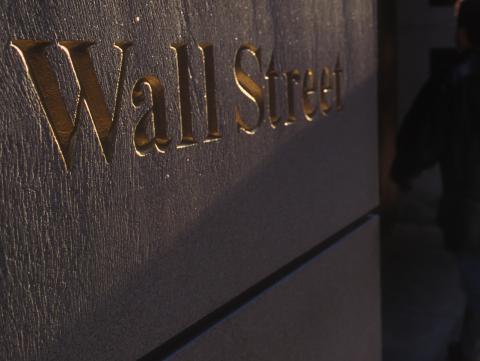Regulating Wall Street: The Dodd-Frank Act and the New Architecture of Global Finance

Edited by
Viral A. Acharya
Thomas F. Cooley
Matthew P. Richardson
Ingo Walter
Foreword by
Myron Scholes
About Regulating Wall Street
The Dodd-Frank Act, signed into law in July 2010, represented the most significant and controversial overhaul of the U.S. financial regulatory system since the Great Depression. Forty NYU Stern faculty, including editors Viral V. Acharya, Thomas F. Cooley, Matthew P. Richardson, and Ingo Walter, provide a definitive analysis of the Act, expose key flaws and propose solutions to inform the rules’ adoption by regulators, in a new book, Regulating Wall Street: The Dodd-Frank Act and the New Architecture of Global Finance (Wiley, November 2010).
About Restoring Financial Stability
Previously, many of these faculty developed 18 independent policy papers offering market-focused solutions to the financial crisis, which were published in a book, Restoring Financial Stability: How to Repair a Failed System (Wiley, March 2009).
Endorsements
"A fascinating, lively, and thoroughly readable guide to the Dodd-Frank Act that pierces the cloud of confusion that hangs over so much of the financial reform debate. It is extremely timely and valuable, and should be required reading for all policymakers, investors, and students of finance. What makes the book so valuable is that it not only analyzes the scope of the Act, in a punchy, lively style, but it also discusses its potential impact. More important, the book analyzes what is not covered in the Act--and where the potential challenges to the financial system still lie."
— Gillian Tett, U.S. Managing Editor, Financial Times
"The crisis of 2008 confronted even well-educated Americans with a flood of incomprehensible financial vocabulary, describing novel financial institutions and practices most of us had never heard of before. Now we have the 2,300-page Dodd-Frank Act, designed to provide the needed repair. Will it do so? What else will it do? How can we even start to think about these basic questions? Regulating Wall Street addresses these questions in a clear, direct style, taking us through the many parts of the Act one at a time, and providing informed, cogent economic analysis of each. A valuable standard source for future discussion."
— Robert E. Lucas, University of Chicago, 1995 Nobel Laureate
"Take the faculty of one of the best finance departments in the world. Ask them to analyze the new U.S. legislation on financial regulation, and to think about what the new law gets right, what it gets wrong, and how it is likely to shape the future of the financial system. With a bit of luck, you get this very impressive book. An absolute must-read."
— Olivier Blanchard, Chief Economist, International Monetary Fund
"Regulating Wall Street goes a long way toward clarifying the intent of the various provisions of the Dodd-Frank Act and evaluating both its effectiveness and limitations. The need for effective implementation by agencies is appropriately emphasized. Not a quick read, a useful reference work on an enormously complex piece of legislation, dealing with an even more complex financial reality."
— Paul Volcker, Chairman of the Economic Recovery Advisory Board and former Chairman of the Federal Reserve (1979-1987)
About the Authors
- Viral V. Acharya
- Barry Adler
- Edward I. Altman
- John Biggs
- Stephen J. Brown
- Christian Brownlee
- Jennifer N. Carpenter
- Thomas F. Cooley
- Robert F. Engle
- Farhang Farazmand
- Xavier Gabaix
- Marcin Kacperczyk
- Nirupama Kulkarni
- Hanh Le
- Samuel Lee
- Anthony W. Lynch
- Thomas Mertens
- Vicki Morwitz
- T. Sabri Öncü
- Lasse Pedersen
- Antti Petajitso
- Thomas Philippon
- Matthew P. Richardson
- Joshua Ronen
- Nouriel Roubini
- Stephen G. Ryan
- Shelle Santana
- Anjolein Schmeits
- Philipp Schnabl
- Kermit (Kim) Schoenholtz
- Or Shachar
- George Smith
- Roy C. Smith
- Marti G. Subrahmanyam
- Richard Sylla
- Stijn Van Nieuwerburgh
- Paul A. Wachtel
- Ingo Walter
- Lawrence J. White
- Robert Whitelaw
News Coverage Highlights
Wall St. reform slow going
Reshaping the banks has only just begun
Dinallo Revisits the Financial Crisis
Preventing the Next Crisis
IA Forum Interview: Dr. Viral V. Acharya
The Wall Street Leviathan

